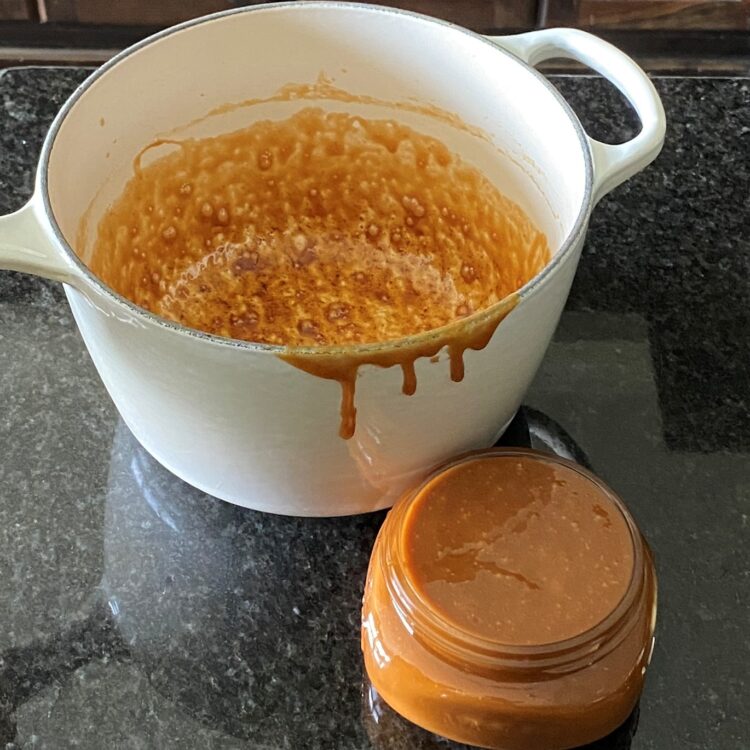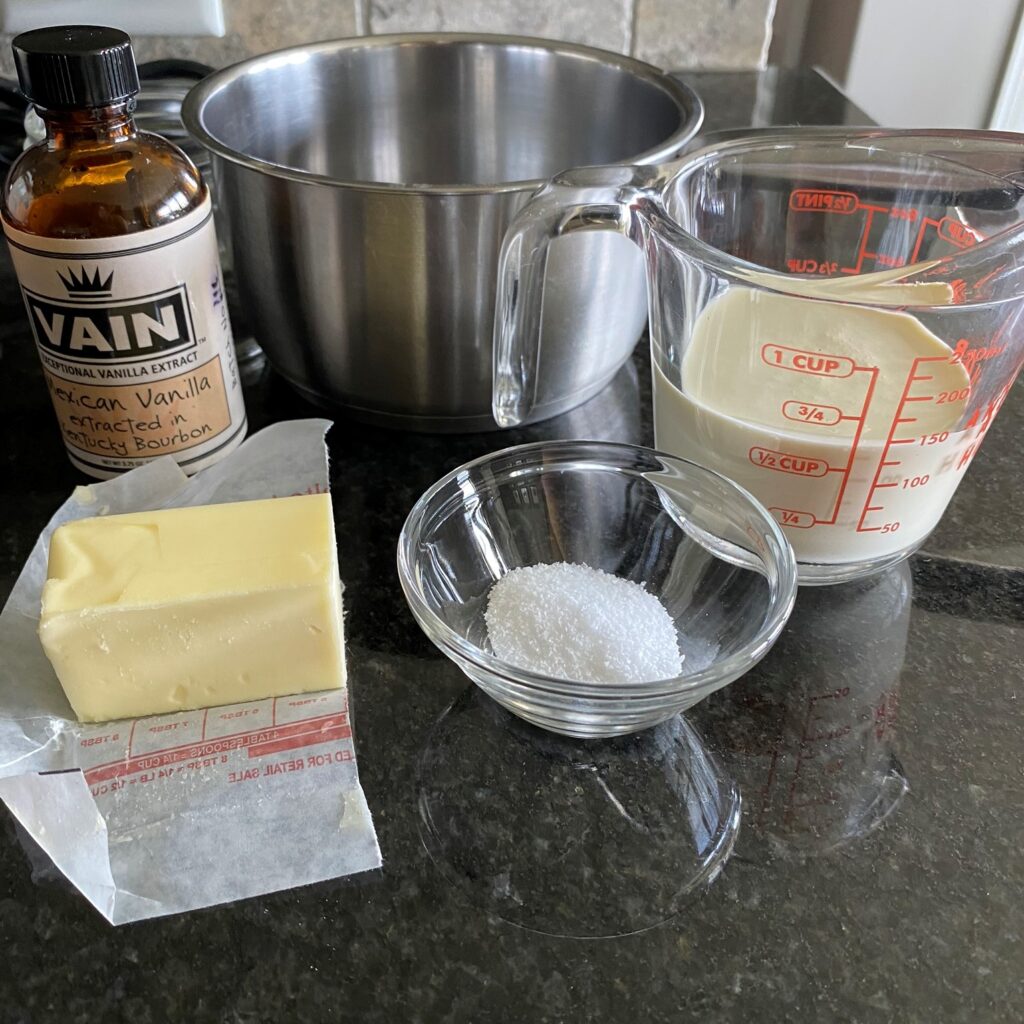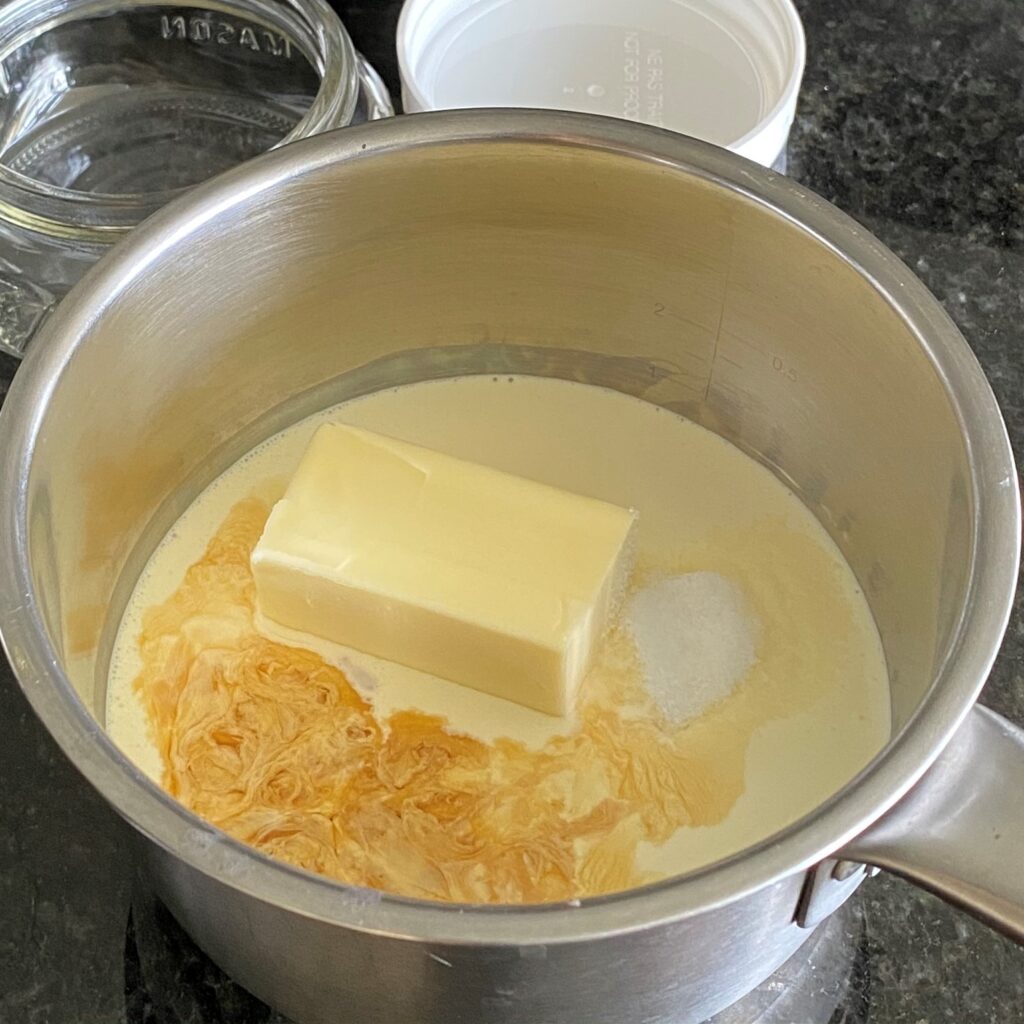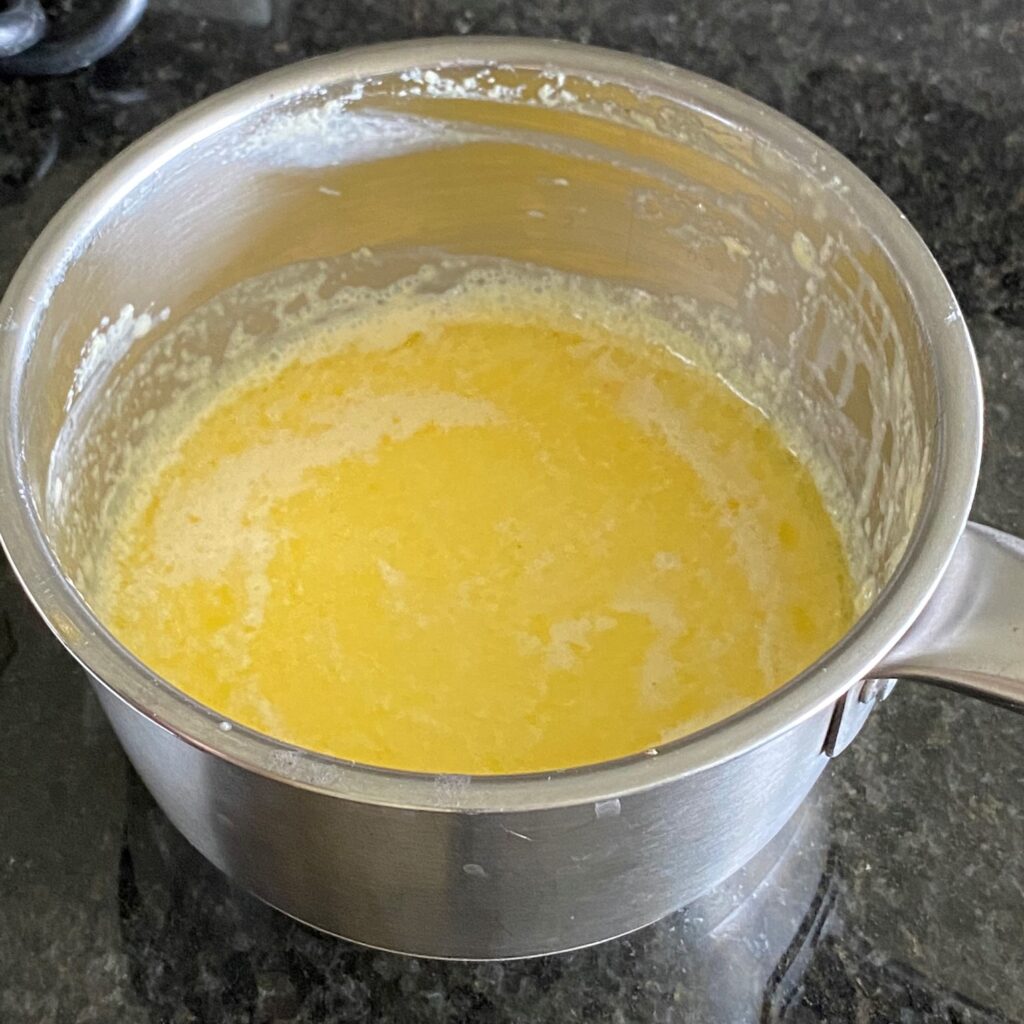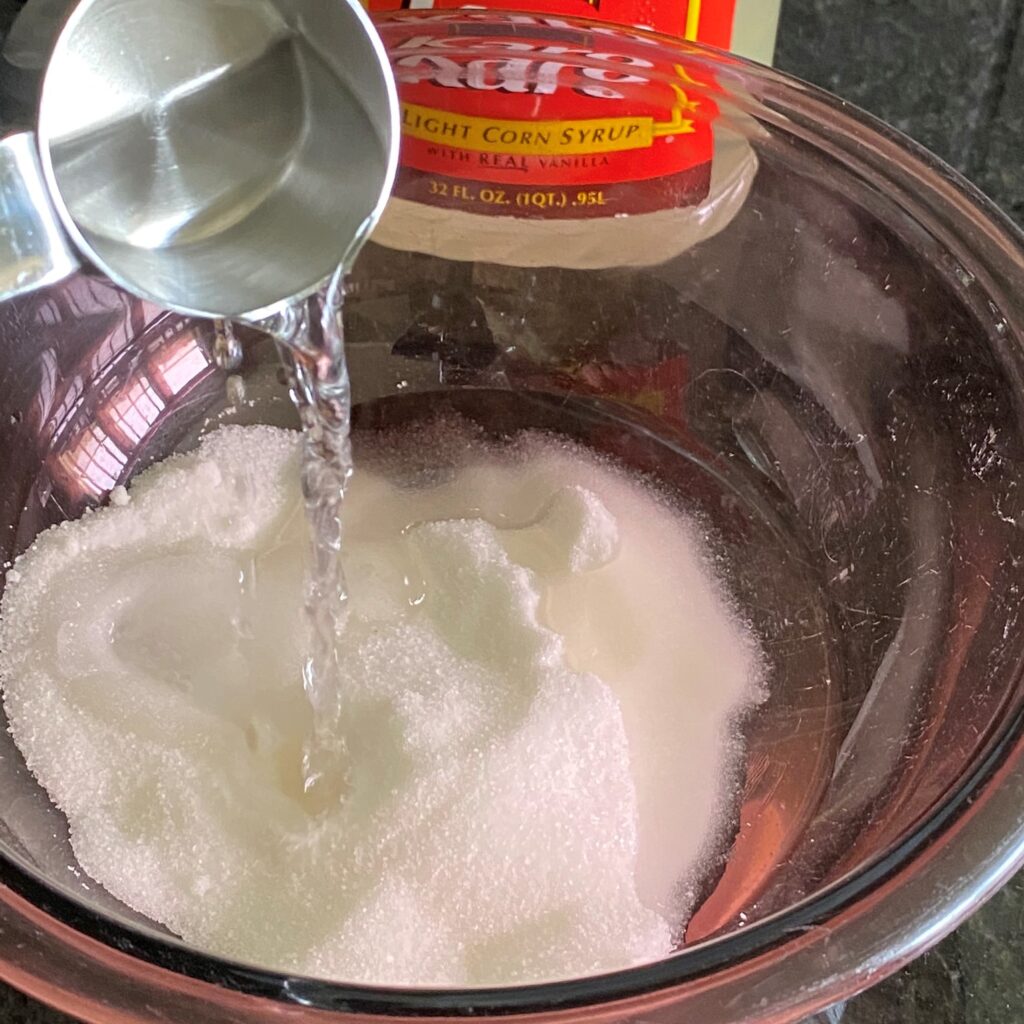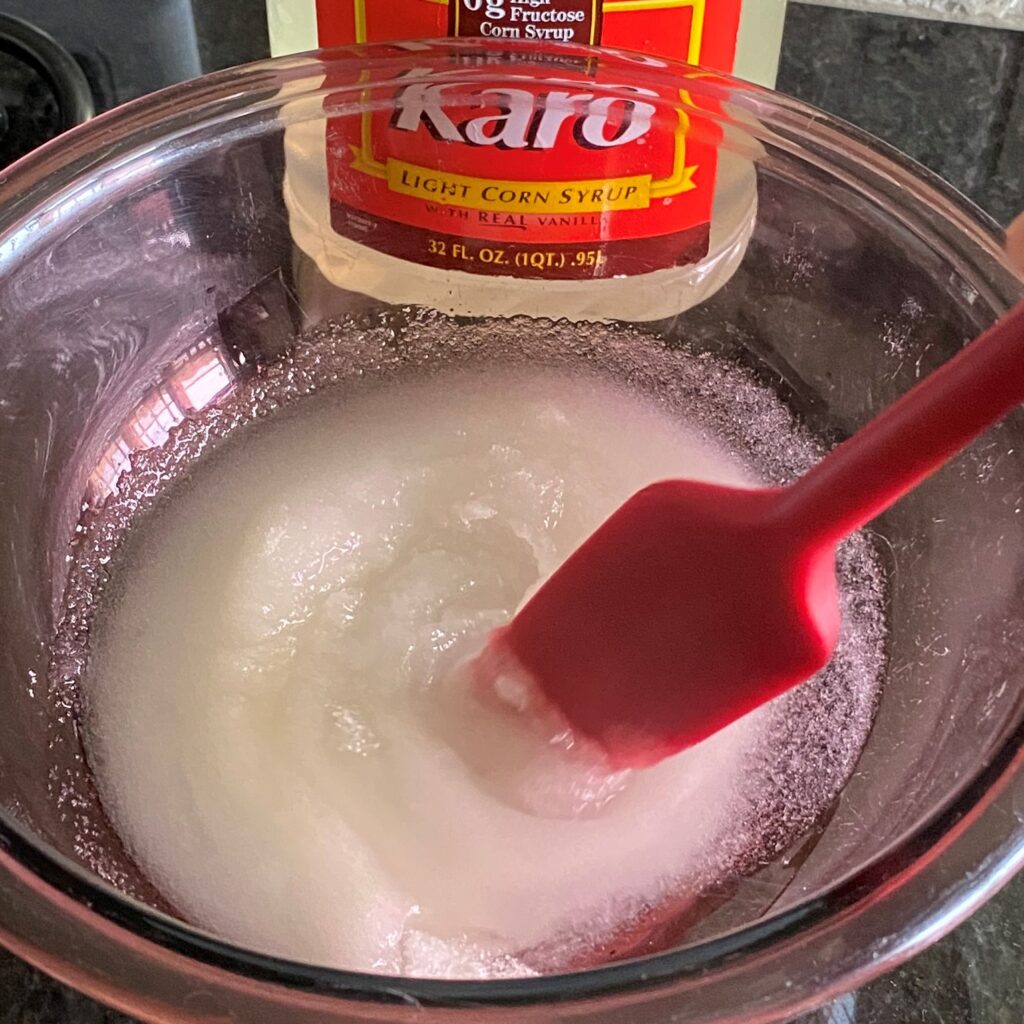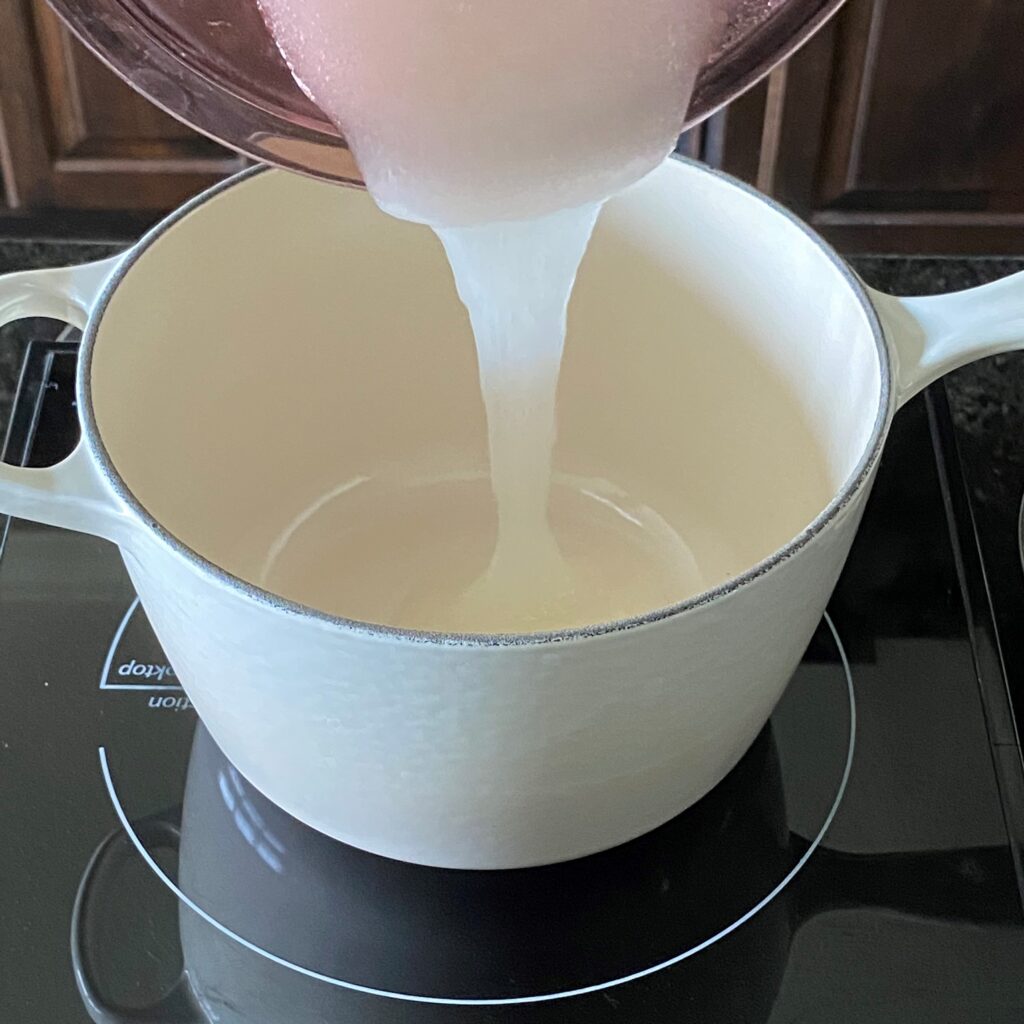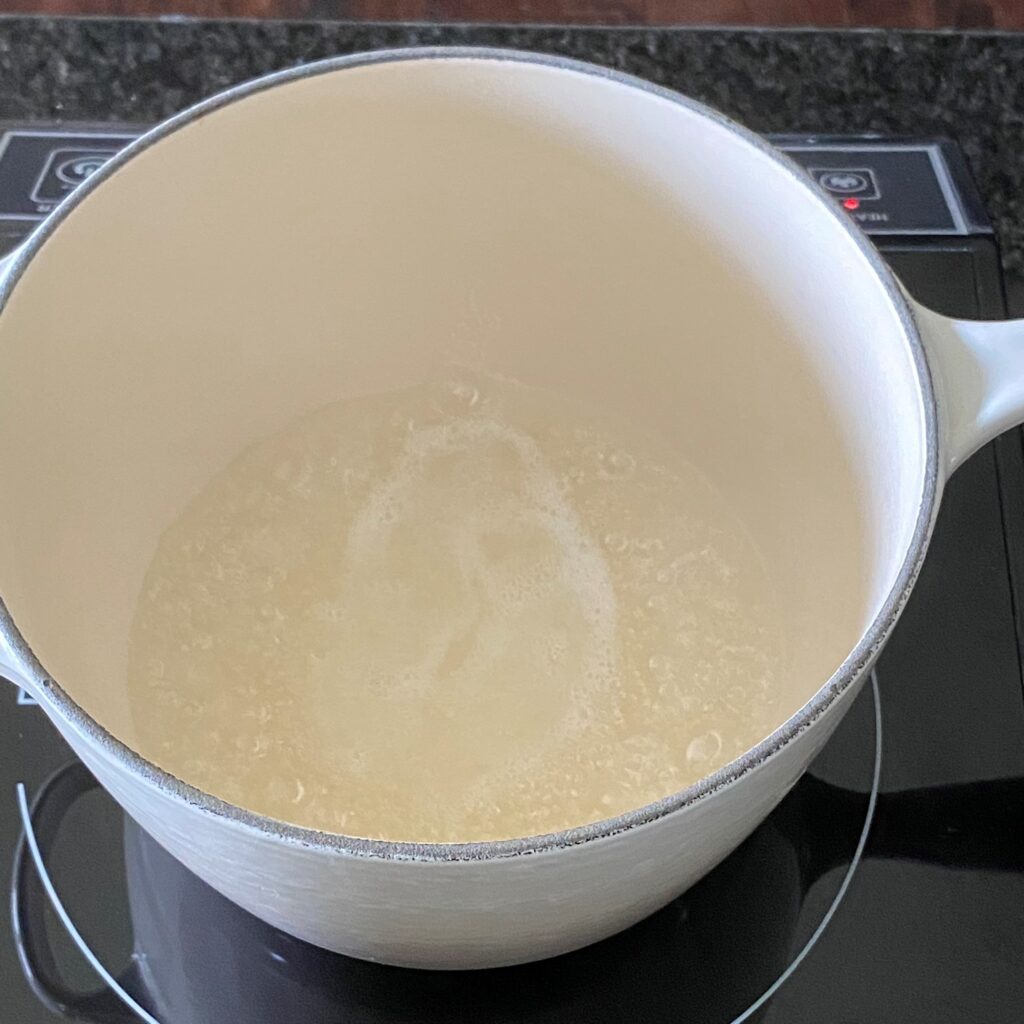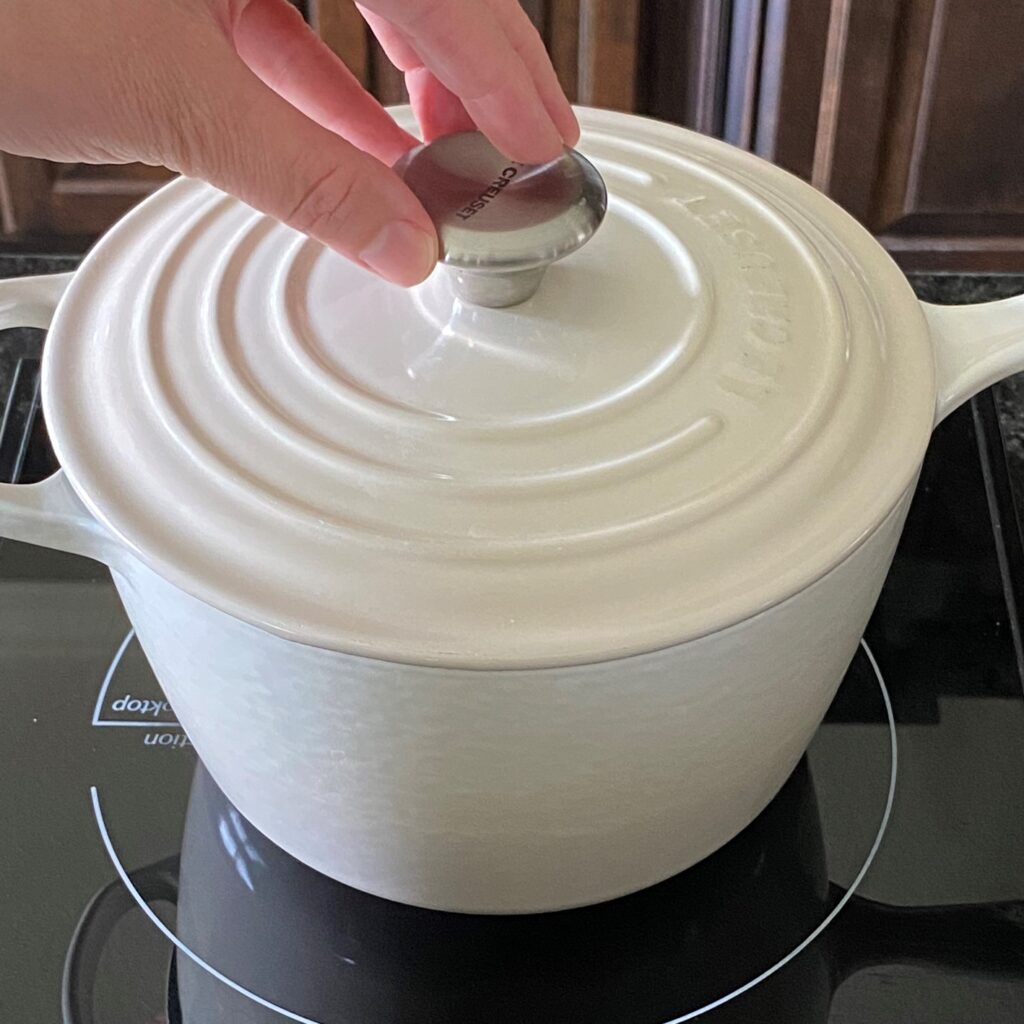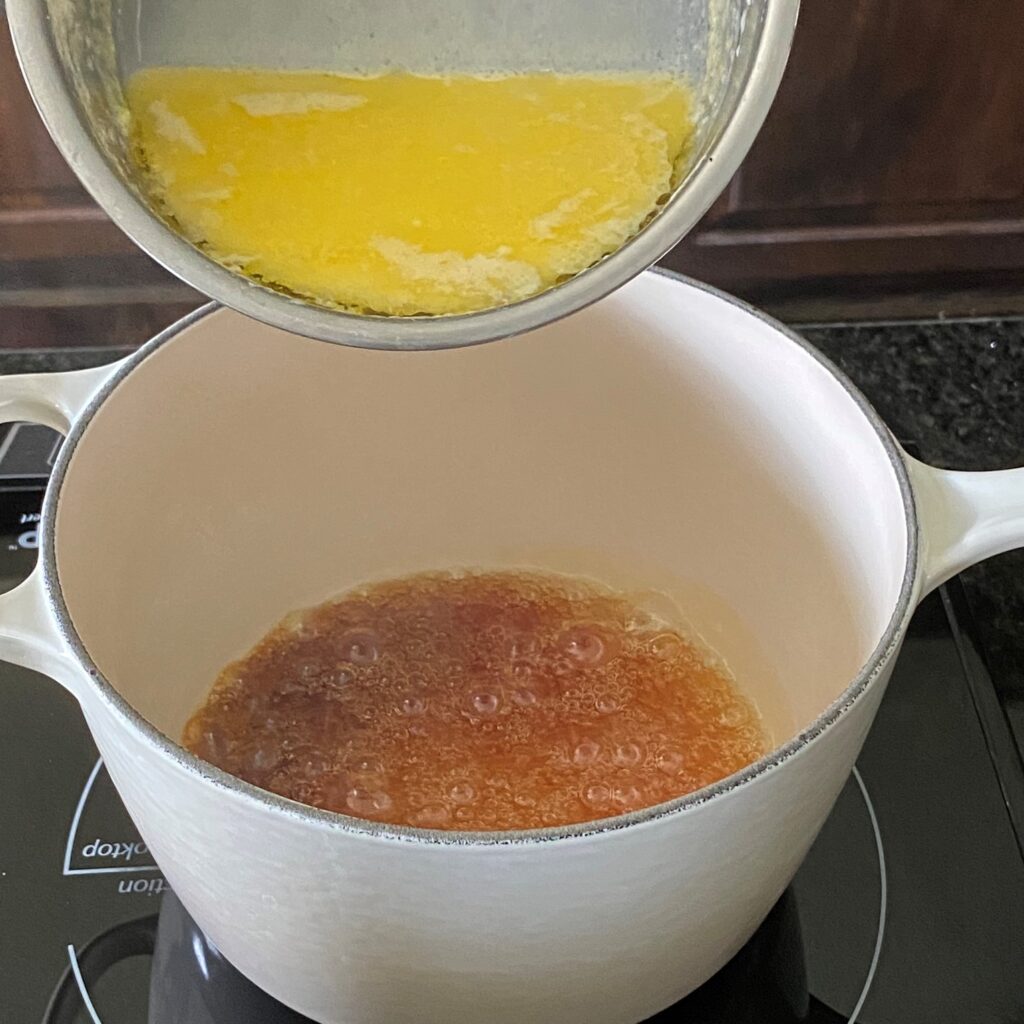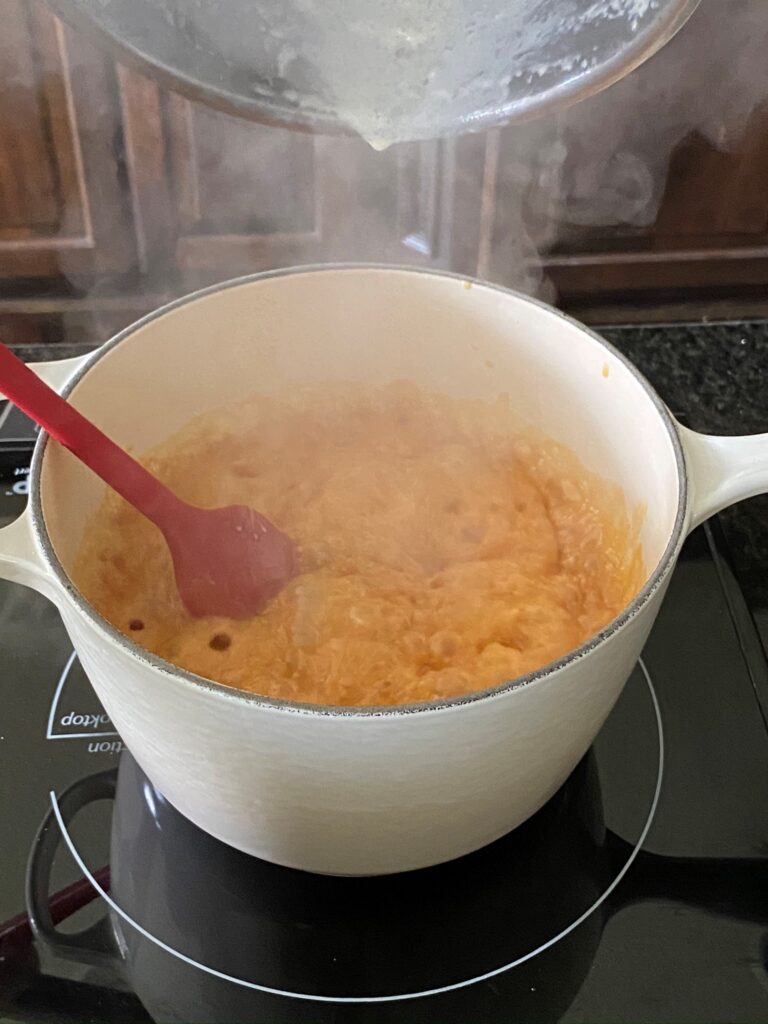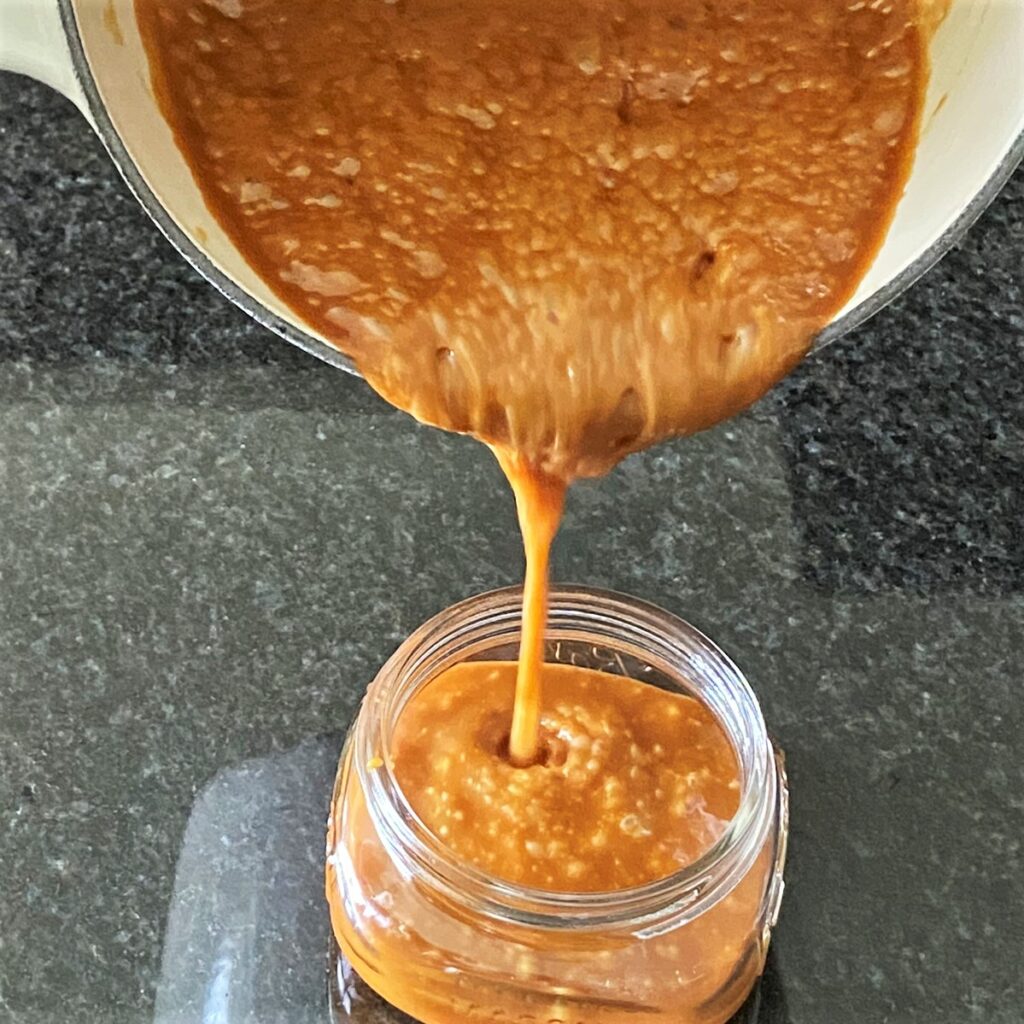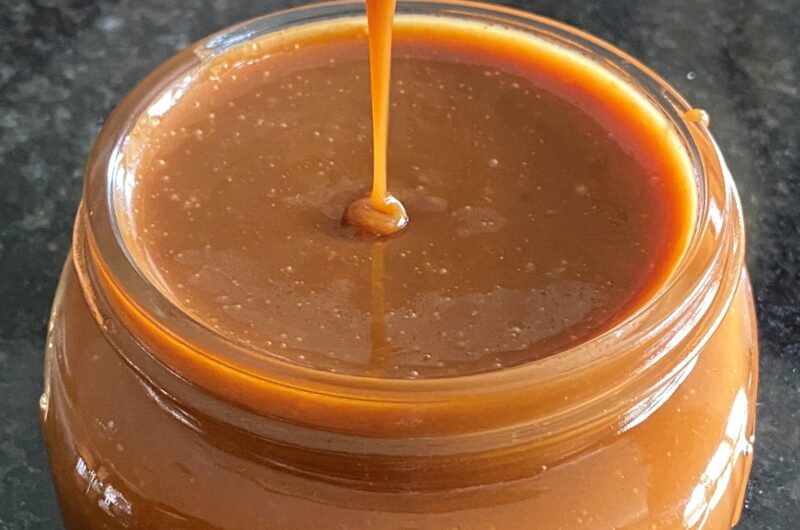This sauce is for topping, filling, glazing, dipping, drizzling, and drooling over.
Learning how to make high quality caramel and caramel sauce at home has to be in the top 10 things I learned how to do in the kitchen as an adult.
I took a caramel class at the Kansas City Culinary Center about 10 years ago with my mom and my sisters from a chocolatier named Aaron Dearinger. Prior to this experience, we purchased “Peters” brand caramel for our holiday chocolates. This class was a game changer for sure! We learned so much, and I am still applying many of Aaron’s tips and tricks to my caramel adventures.
Thoughts on the caramel process:
Caramel is not for “multitaskers.” It demands your full attention.
There are two primary methods of starting caramel; the dry method, which is just caramelizing sugar by itself before adding cream and butter, or the wet method, which involves adding water and sometimes corn syrup or glucose syrup to the sugar before caramelizing. I prefer the wet method, hands down. For real. I have scorched more batches of sugar trying the dry method than I care to admit.
When making caramel, use cream with the highest fat content you can find. This enhances the texture of your caramel. Kansas City folks may want to consider Shatto heavy cream. It is a local product that has the perfect consistency and fat content for quality caramel.
For all caramel and caramel sauces, cream and butter are added. Always heat the cream and butter before adding it to the hot caramelized sugar. Adding cold ingredients to hot sugar will result in crystals and crunchy bits. I like to heat the cream, butter, salt, and usually some vanilla or booze in a small saucepan just to a simmer while the sugar is caramelizing. WARNING! Caramel bubbles up violently when you add the cream and butter. Be sure you are using a large enough pot, and long spatula or wooden spoon, and that children are not nearby. Hot caramel can cause serious burns.
NEVER scrape the bottom or sides of the pot when pouring the hot caramel into another container. There will inevitably be crystalized sugar or overcooked caramel on those surfaces and that will cause your caramel or caramel sauce to crystalize and become grainy. It’s difficult to ignore that film of delicious caramel lining the pot……just trust me.
If you truly can’t live knowing any was wasted, scoop it out into a separate dish and nibble on it that day.
Caramel can be intimidating, but it is absolutely worth it. I’ll walk you through the steps for this caramel sauce:
- Measure out the cream ingredients; cream, vanilla, butter and salt. Begin to warm them on low heat on the stove. Keep one eye on this mixture as cream can boil up quickly and make a real big mess!
2. Heat a heavy bottomed pot with a lid over medium heat. While the pot heats up, mix together the sugar, water, and corn syrup in a clean bowl. It will look like a paste.
3. Pour the sugar mixture into the heated pot and place the lid on top. Placing the lid on top, allows the steam from the wet sugar mixture to “wipe” down the sides of the pot to prevent sugar crystals from forming. You will need to check the color of this mixture periodically by lifting the lid. DO NOT STIR. Wash the silicone spatula or wooden spoon before using it for the next stage of the caramel sauce.
4. Caramelize the sugar mixture. This is where you get the flavor! Not enough, and your caramel will just be sweet. Too much and your caramel will taste scorched. If you think it’s scorched, pour it into a foil lined pan and start over. I try not to waste good cream, butter, and vanilla on bad (and inexpensive) sugar.
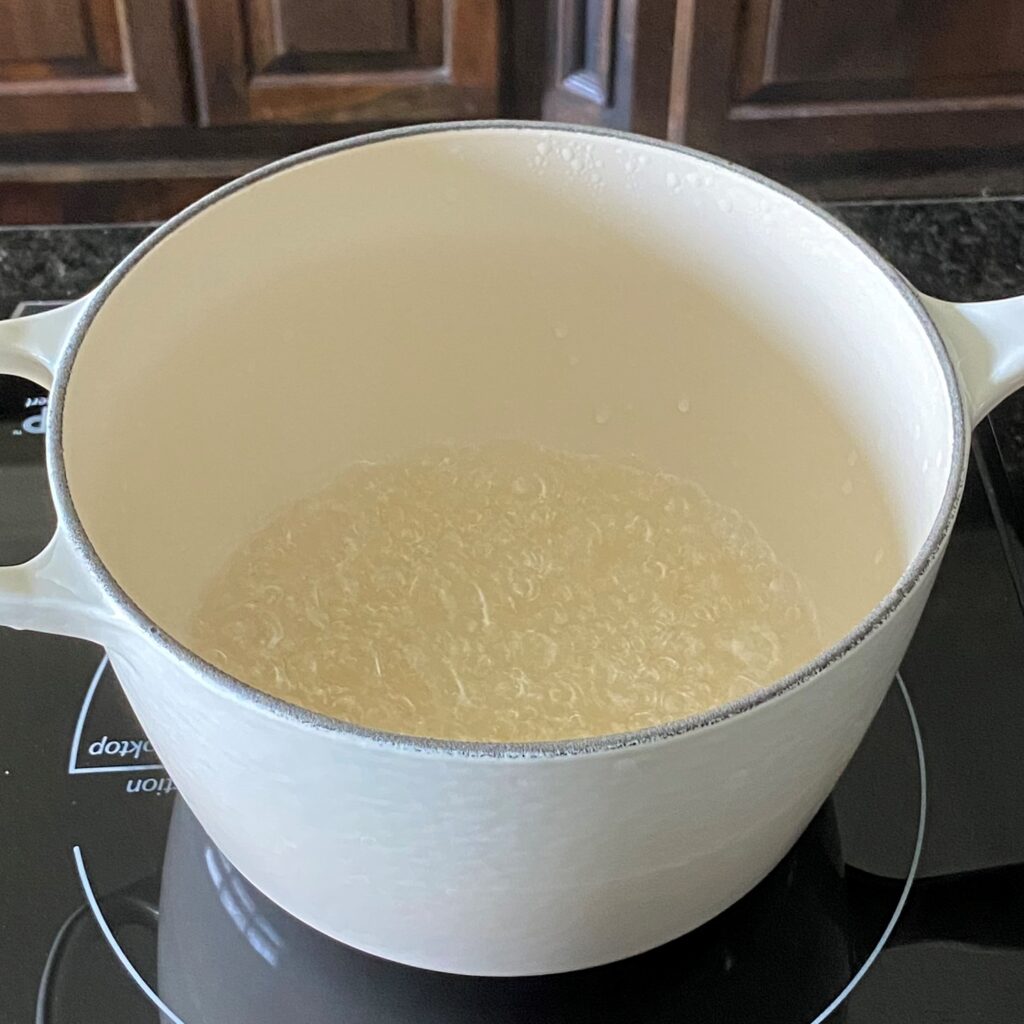
NOPE 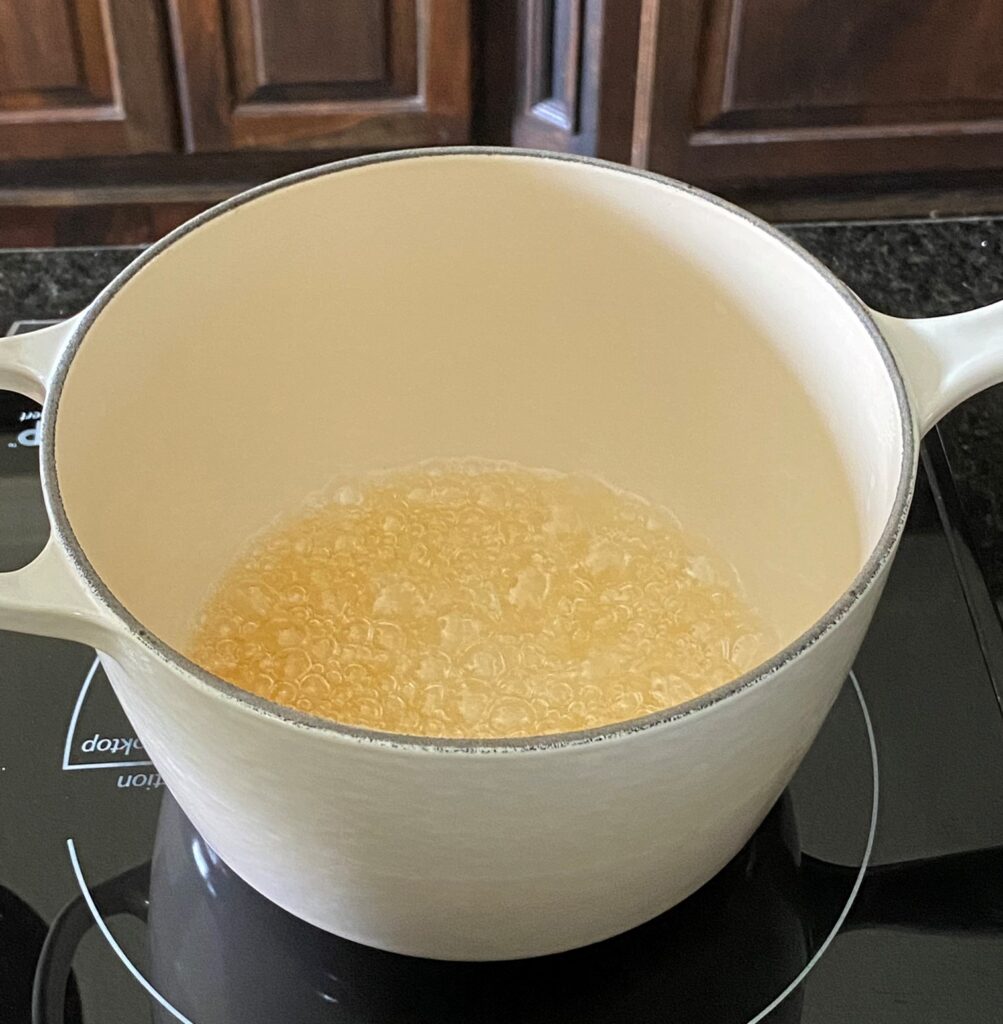
NOPE 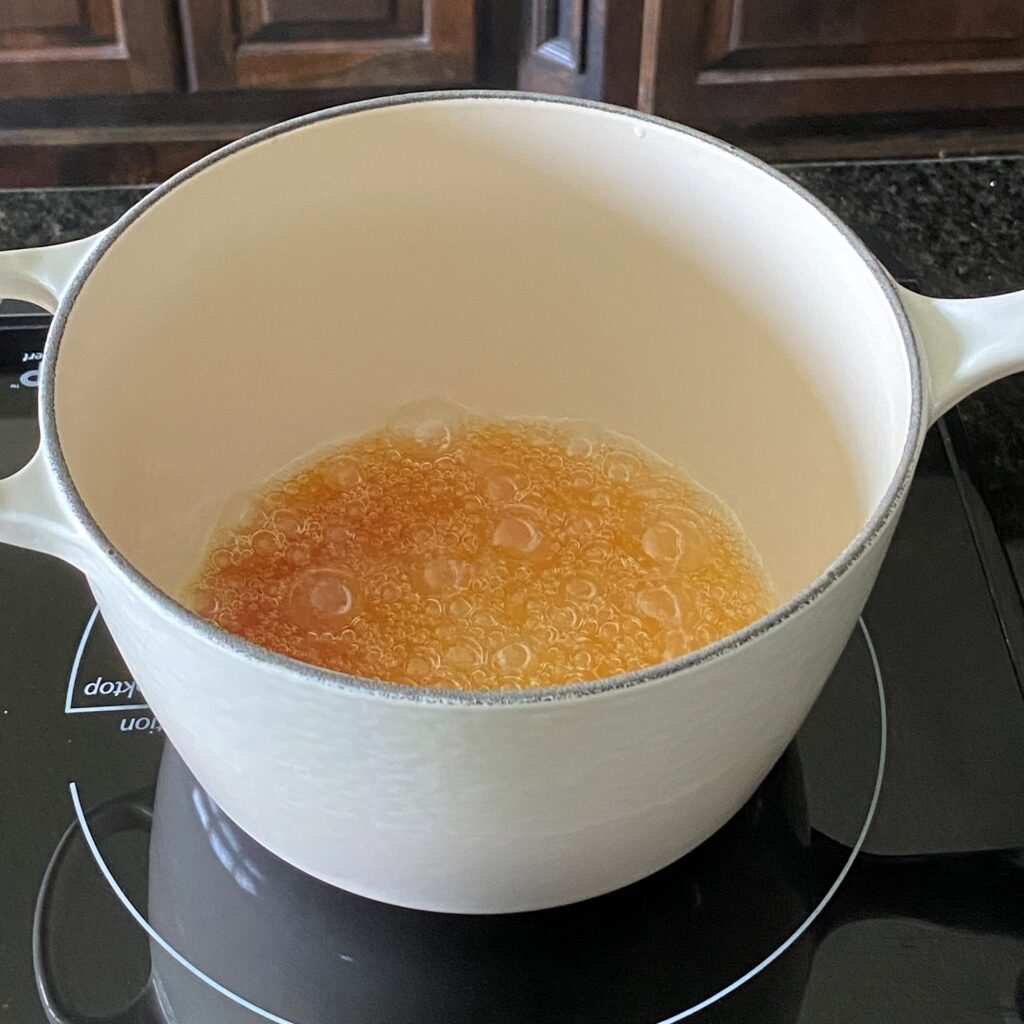
ALMOST THERE… 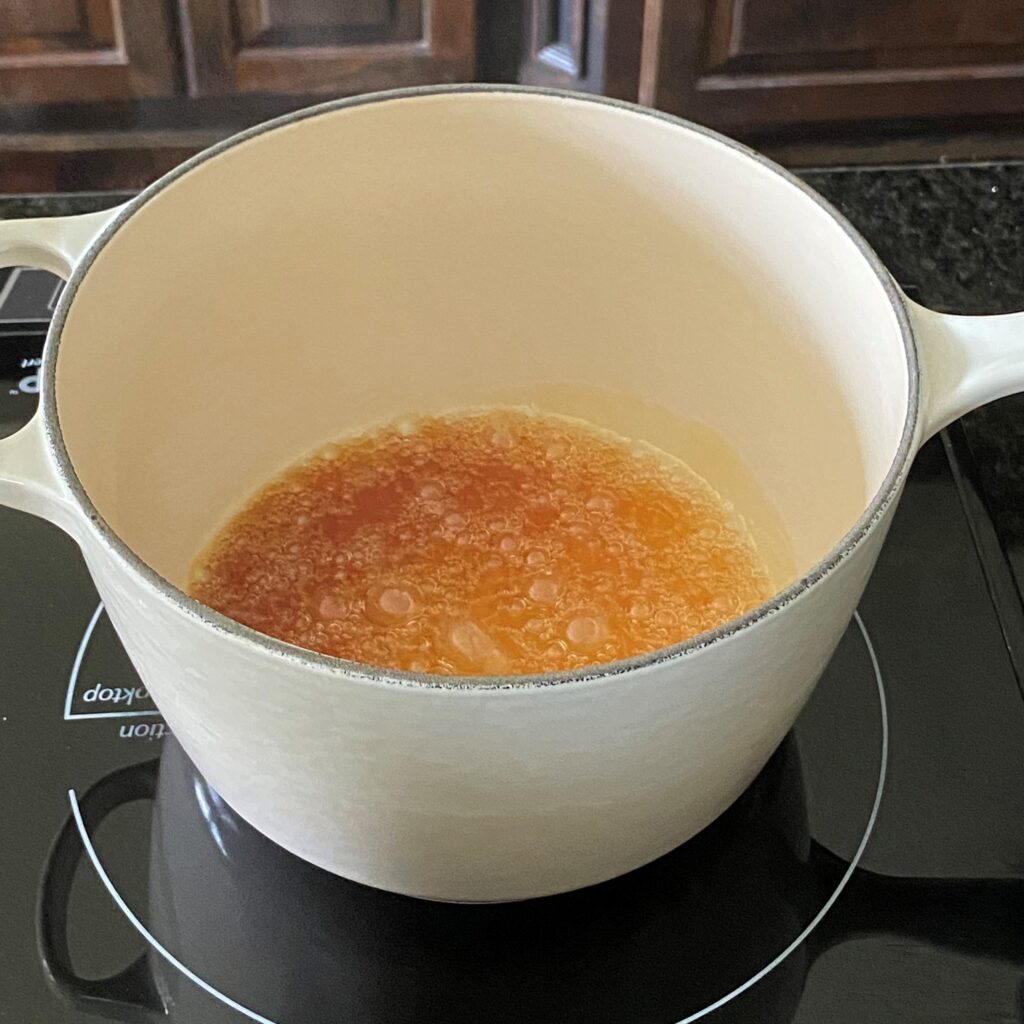
YES! YES! YES!
5. As soon as your sugar gets the color you want, add in the heated cream mixture, stirring constantly with a silicone spatula. You do have to work fast, because once your sugar is the right color, it can quickly go over to the dark (scorched) side. It will bubble and steam when you add the cream mixture. Be prepared and keep children, pets, and meandering adults out of the way.
6. Stirring continuously, you will also need to check the temperature using a candy thermometer or an instant read thermometer. I use Thermapen brand. For caramel sauce, your goal is 225° F. If you go over that temperature, your sauce will be thick and not so saucy. (It will still be tasty.) The amount of time this will take will depend on how hot your cream mixture is. Sometimes it takes a minute, sometimes it takes several. Use your thermometer!
7. When you hit 225° F, immediately pour the caramel sauce into a dish or heatproof container of your choice. This recipe makes 1 cup, so I poured my sauce into a ball jar. DO NOT SCRAPE THE POT. Allow your sauce to cool, uncovered, at room temperature, before using.
This sauce can be gently reheated in a microwave in 10 second intervals if it’s a little too thick, or you want it warm for something.
You can store the caramel sauce at room temperature for a couple of days or in the fridge for up to a month.
Salted Caramel Sauce
Course: Dessert, CondimentDifficulty: Moderate1
cup10
minutes30
minutes40
minutesIngredients
3/4 cup granulated sugar
2 Tbsp white corn syrup
2 Tbsp water
1/4 cup unsalted butter
1/2 cup heavy cream
1/2 tsp sea salt
1 tsp vanilla
Directions
- Warm the cream, vanilla, butter and salt in a small saucepan over low heat. Turn off the heat once the mixture comes to a simmer.
- Heat a heavy bottomed pot with a lid over medium heat. While the pot heats up, mix together the sugar, water, and corn syrup in a clean bowl.
- Pour the sugar mixture into the heated pot and place the lid on top. You will need to check the color of this mixture periodically by lifting the lid. DO NOT STIR. Wash the silicone spatula or wooden spoon before using it for the next stage of the caramel sauce.
- As soon as the sugar gets the color you want, add in the heated cream mixture, stirring constantly with a silicone spatula. It will bubble and steam when you add the cream mixture. Be prepared and keep children, pets, and meandering adults out of the way.
- Stirring continuously, check the temperature using a candy thermometer or an instant read thermometer. For caramel sauce, the goal is 225° F. The amount of time this will take will depend on how hot the cream mixture was when you added it. Sometimes it takes a minute, sometimes it takes several. Use your thermometer!
- At 225° F, immediately pour the caramel sauce into a dish or heatproof container. This recipe makes 1 cup. DO NOT SCRAPE THE POT.
Allow your sauce to cool, uncovered, at room temperature, before using.
Notes
- This sauce can be gently reheated in a microwave in 10 second intervals if it’s a little too thick, or you want it warm for something.
- You can store the caramel sauce at room temperature for a couple of days or in the fridge for up to a month.
